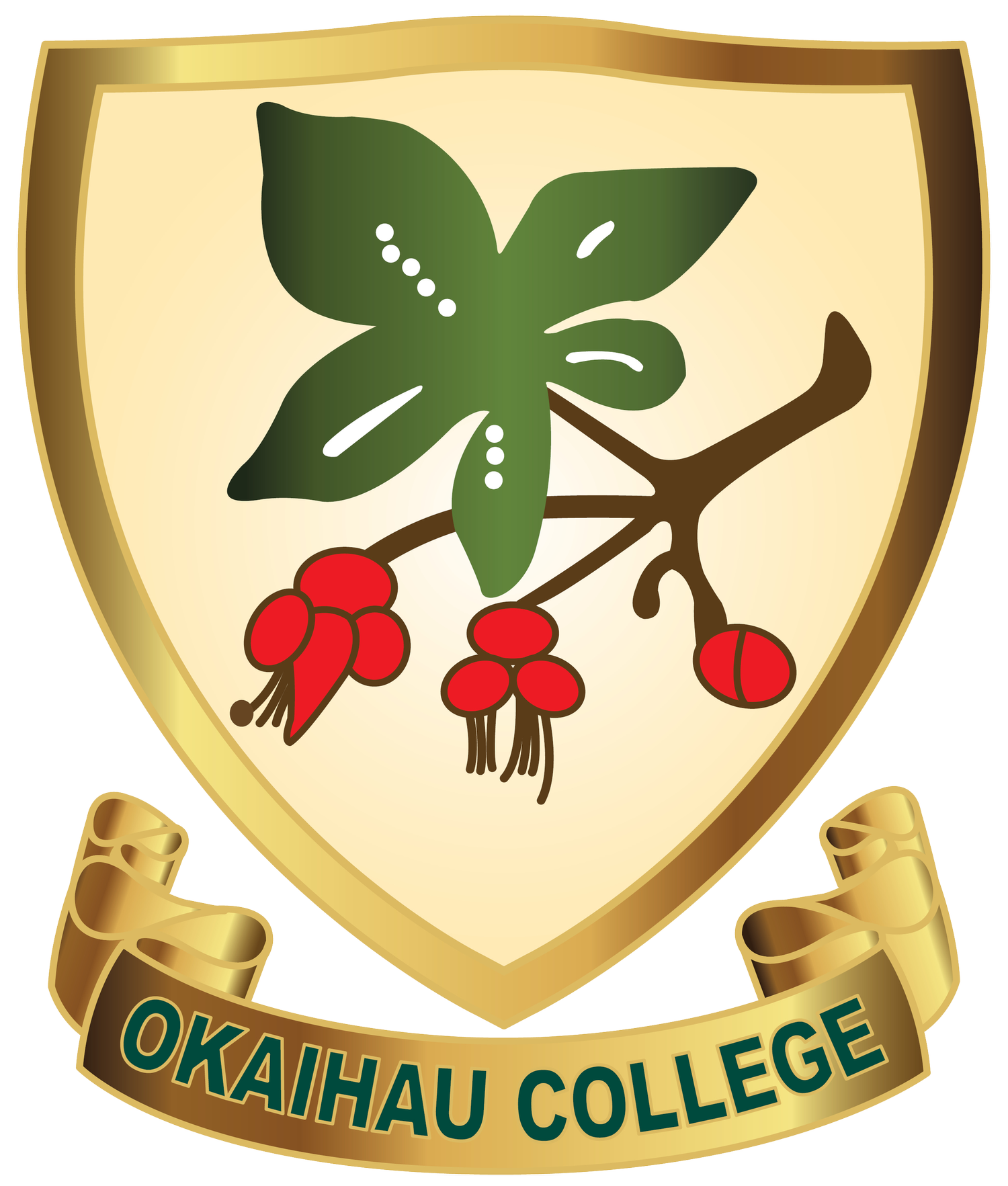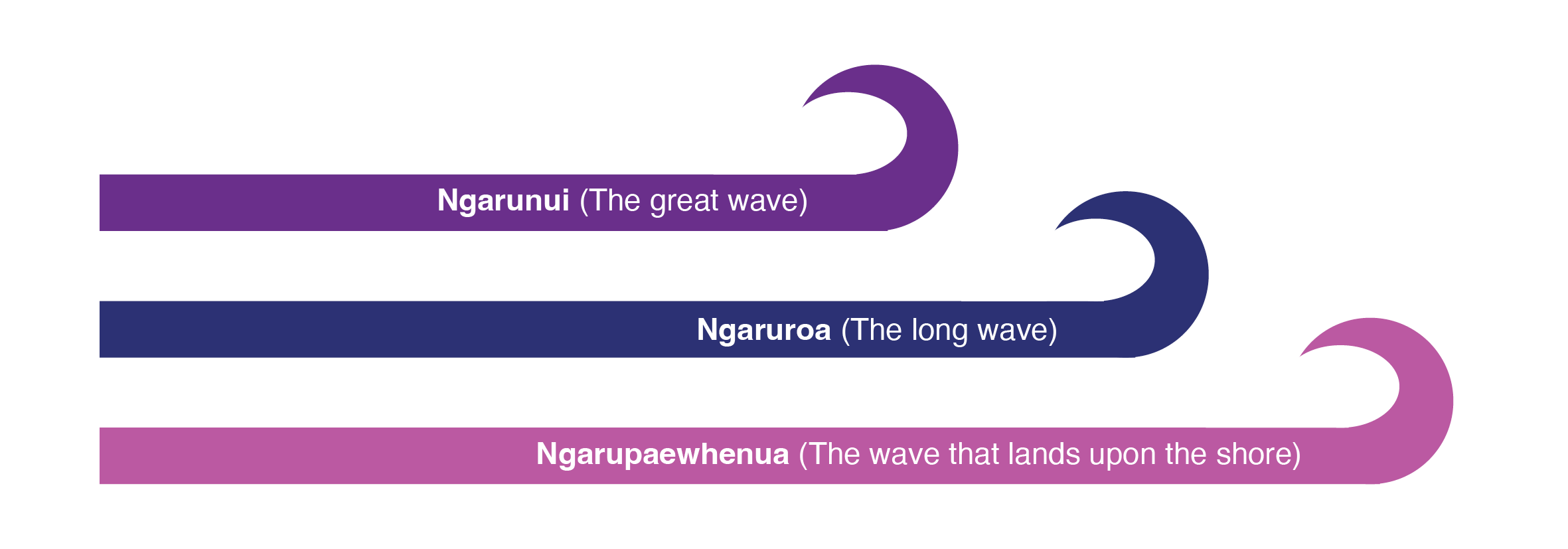Our Vision
At Okaihau College, we are committed to providing our students with a high standard of education which nurtures intelligence and lifelong learning, encourages achievement, creativity, confidence and fosters true community spirit.
Every student develops the skills and attributes to success, then contribute to their community.
E tipu e rea mō ngā rā o tō ao.
We believe that for every child to be successful, we need to enrich their mauri. A way in which we do this is to stand by our Whakarongorua values.
Whanaungatanga
Rangatiratanga
Taha Wairua
Te ngaru nui a te matauranga
Te ngaru roa o te whai
Eke noa a ngaru paewhenua
The three sacred waves of Nukutawhiti
Te Ngarunui, Te Ngaruroa, Te Ngarupaewhenua
The great wave, the long wave and the wave that lands upon the shore
Kupe gave his waka Matawhaorua to his grandnephew Nukutawhiti to travel from Hawaiiki to Hokianga. However the waka of Kupe had been sunk in a fresh water lagoon for several decades, was unbalanced and required restoration. Nukutawhiti used his toki (adaze) to rework and balance Matawhaorua and renamed it Ngātokimatawhaorua as a consequence of his mahi.
Kupe instructed Nukutawhiti to point the bows of his re-adzed waka, to the cloud pillar that lies to the south west and at night to steer Ngātokimatawhaorua to the star Atua-tahi. “At the break of light in the morning hold your waka to the left of Mangoroa (the Milky Way) and continue towards the cloud pillar,” he told him. Kupe explained to Nukutawhiti the location of Te Hokianga nui ā Kupe (The great returning place of Kupe – The Hokianga Harbour) where his son Tuputupu Whenua was laid to rest in Te Puna o Te Ao Mārama, as a protection and claim to the harbour for the people of Nukutawhiti.
Nukutawhiti departed with his cousin Ruanui on the Māmari waka from Hawaiiki, reciting a karakia to call up the Ngarunui (large wave) to travel on. The two waka travelled together on Ngarunui with several taniwha including Puhi Moana Āriki wandering back and forth on the waves in front of them as protection.
The crisscrossing of the taniwha Puhi Moana Āriki across Ngarunui in front of the two waka, and the early warnings that this taniwha was able to give Nukutawhiti, gave rise to a new name for Puhi, being Puhi Te Āewa (Puhi the wave surfer). The descendant of Nukutawhiti took these names as iwi names generations after their arrival in Taitokerau, Ngāpuhi and Te Āewa. Ueoneone is a descendant of the people of Te Āewa, who generations later became known as Te Rārawa.
After initiating their journey on Ngarunui this wave dropped away and Ngaruroa (the long wave) guided Nukutawhiti and Ruanui across Te Moana ā Kiwa (The Pacific Ocean) and Te Moana Tāpokapoka ā Tāwhaki (The Tasman) to the Hokianga harbour.
When they arrived at the Hokianga Nukutawhiti and Ruanui were confronted by huge and turbulent seas, created by the karakia of Kupe as protection for the Hokianga when he tossed his belt into the ocean. The belt of Kupe is embodied now in the infamous and treacherous Hokianga Bar. To calm the waters Nukutawhiti recited a now famous karakia, ‘E kau ki te Tai e’ which Ngāpuhi still recites to this day on our marae and in haka.
With the Hokianga Bar now calm, Nukutawhiti then sent the taniwha Puhi Moana Āriki (Puhi Te Āewa) and Rangi Uru Hinga back to Hawaiiki to inform Kupe that they had arrived safely in the Hokianga. The taniwha Araiteuru and Niniwa entered the Hokianga to protect the two waka. Araiteuru resides now to the south and Niniwa guards the north at the mouth of the Hokianga harbour. These taniwha provide Ngāpuhi with much strength and mana as shown in the famous Ngāpuhi whakatauki:
“Kotahi ki reira, ki Araiteuru.
Kotahi ki reira, ki Niniwa.
A homai he toa, he kaha,
e aua taniwha, ki Ngāpuhi”
“One there is for Araiteuru.
One there is for Niniwa.
May those taniwha bring courage
and strength to Ngāpuhi.”
At this point both waka then proceeded to land on the shores of the Hokianga, Nukutawhiti to the North and Ruanui to the South; Ngaruroa then dropped away and Ngarupaewhenua (the wave which breaks on the shore) guided them both onto land.
Nukutawhiti named his first son Ngarunui to remember the assistance Ngarunui had given to them on their journey from Hawaiiki. Ngarunui subsequently named his first son Ngaruroa, and Ngaruroa named his first son Ngarupaewhenua.
These are the three tapu waves of Nukutawhiti and Ngāpuhi, which also represent the three stages of success. The first Ngarunui being to decide to begin a journey or task, the second Ngaruroa being to stick with the journey and do the hard yards, the third wave Ngarupaewheuna being to see that journey through to its completion.
Ngarunui, Ngaruroa, Ngarupaewhenua, ko ngā ngaru tapu e toru o Nukutawhiti me Ngāpuhi.
In our school the students are placed in a Ngaru by a senior leader (Deputy Principal). The placement factors in older siblings who are at the school and have previously been at the school as well as consultation with whanau. Students will stay in their same Ngaru throughout their time at Okaihau College unless exceptional circumstances occur that require a change of Ngaru. These changes will again, be in consultation with whanau.
Whanau Groups
Students are allocated into a Whanau Class, and the Whanau Teacher becomes your first point of contact for all learning and pastoral care. Your child will stay with their Whanau Teacher for the duration of their education at Okaihau College, moving through the year levels as a whanau together. Students spend their time in the whanau groups focusing on building key social and emotional skills and values such as resilience, growth and whanaungatanga. Students also eat their shared kai together as a group each lunchtime.
Ngarunui, Ngaruroa, and Ngarupaewhenua
Each Whanau Class is part of a “Ngaru”; Ngarunui, Ngaruroa or Ngarupaewhenua. Each Ngaru has one Year 7, 8, 9, 10, 11, 12 and 13 class which provides opportunities for tuakana / teina relationships, leadership development and student mentoring. There are lots of activities (Swimming Sports, Cross Country, Athletics Day) through the year which provide students the opportunity to dress up in their Ngaru colours and participate in inter-Ngaru competitions. We try and keep immediate family members in the same Ngaru.
Nga Pou Herenga
Nga Pou Herenga are the “Deans” of each Ngaru. They oversee the overall pastoral care of students in their Ngaru. Pou Herenga provide the next layer of care and support to students and their whanau beyond the Whanau Teacher.
Whakarongorua Marae
Whakarongorua Marae is our on-site school marae, and is seen as a link in improving the performance of all our students. Our marae meets specific community needs. The role of our marae:
A place where all who meet can feel at home.
A venue for community / school communication.
A learning environment with emphasis on te reo Maori and Maori Performing Arts.
A building which comes from the past but is not constrained by it.
A place that is progressive, special, and different.
A place that is closely integrated with the rest of the school systems and buildings.
The spiritual heart of the school.

